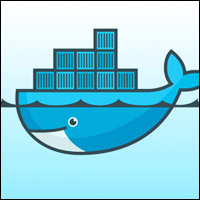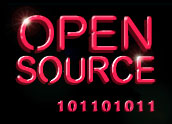Microsoft recently established a .Net foundation and open-sourced substantial parts of the popular programming language, continuing to spread its newfound love for open-source software. However, another movement — DevOps — may be more of a driving factor in Microsoft’s .Net move.
In establishing the independent .Net Foundation and making more key pieces of .Net open source, Microsoft was promoting collaboration and community, it said. Many open-source technologies exist for .Net, including the recently released .Net compiler platform codenamed “Roslyn.”
Microsoft also highlighted the value and innovation that comes from broader community collaboration, even on its own developer tools and technologies, such as .Net.
Embracing DevOps
Microsoft’s recognition of the power of open-source software is not remarkable. The company has been actively working to change its thinking and strategy on open-source software for years now.
What is interesting is the establishment of the foundation and the further opening up of .Net, which highlights how Microsoft technologies, including Windows, Azure, and .Net, have become part of the DevOps movement — a trend referring to faster software releases based on collaboration and efficiency among developers and IT operations teams.
This is quite a contrast to the DevOps landscape that existed three or four years ago. Back then, when Windows admins would dare speak up or ask questions about how they might become more agile and join the DevOps movement, they were told to switch to Linux.
Today, most DevOps tools and providers have integrations, plug-ins, and support for Windows management. Indeed, I have written previously about how the support for Windows in DevOps tools — such as the Chef and Puppet configuration and provisioning automation software applications —reflects the extension of DevOps to more mainstream enterprises, where Windows and .Net are common.
The PaaS Piece
We have also seen .Net rise in the polyglot programming trend: In today’s market, a much greater variety of languages, databases, infrastructure, and other technologies are used to develop, deploy, and manage applications.
While most PaaS platforms have become polyglot and support a variety of languages, the enterprise world is still largely Java and .Net. Thus, .Net has become an important part of PaaS, particularly private PaaS aimed at enterprises.
CenturyLink’s 2013 acquisition of .Net PaaS player Tier 3 is evidence of this, as the acquirer sought to offer a complete set of outsourced IT services, from hosting to enterprise cloud. Prior to acquiring Tier 3, CenturyLink made a similar move by acquiring polyglot PaaS player AppFog.
Further evidence of a Microsoft and .Net presence in DevOps comes from the added support of .Net among PaaS providers, including Red Hat with OpenShift.
Although Microsoft’s proprietary programming language may not seem like a good fit, Red Hat has been fielding inquiries about working with .Net on its OpenShift PaaS since it launched the service. So, with help from Uhuru Software, which focuses on .Net and Windows support on open-source cloud platforms, Red Hat set out to provide more choices to its OpenShift users. Red Hat said the prevalence of .Net applications among enterprise organizations also drove its support of Microsoft technology.
Suspicion Waning
The most obvious reason for Microsoft’s establishment of a .Net foundation and further opening up the technology is the continued presence and prominence of open source software — and openness in general — in key, fast-moving enterprise IT trends, including cloud computing, Big Data, and DevOps. Indeed, in 2012, when Microsoft spun off its open source-focused subsidiary Microsoft Open Technologies, it cited emerging opportunities in open technology — including cloud computing and DevOps — as the reasoning.
Today, Microsoft continues to reshape its approach to open-source software, complete with new CEO Satya Nadella. Earlier this year, Nadella replaced one of the world’s greatest open-source opponents, former CEO Steve Ballmer.
Though there typically is no shortage of pushback against Microsoft when it makes open-source moves, skepticism, and suspicion seem to be giving way to technicality and practicality, both within and outside of Microsoft. By continuing to promote openness, integration, and true collaboration with other vendors and technologies, including open source, Microsoft is doing its part to ensure its place in key trends such as cloud computing and DevOps.




















































I don’t think it is really open…
The last I knew subsets were not allowed…
And the "patent promise" only if you used Windows… no other platforms acknowledged.
and they didn’t open significant parts of .net.